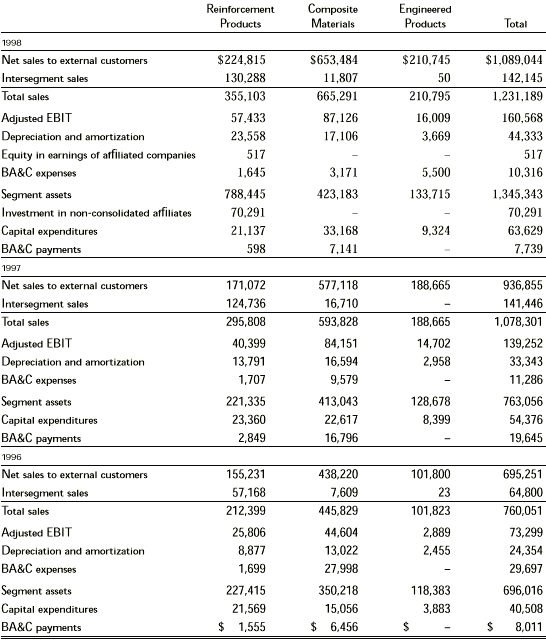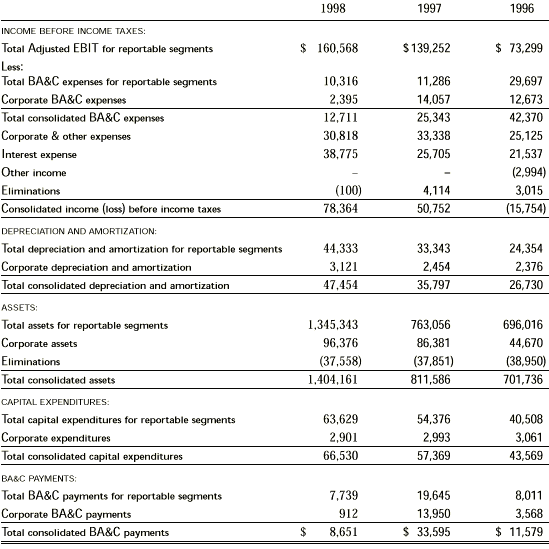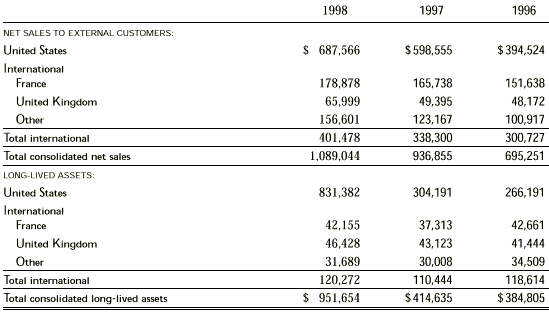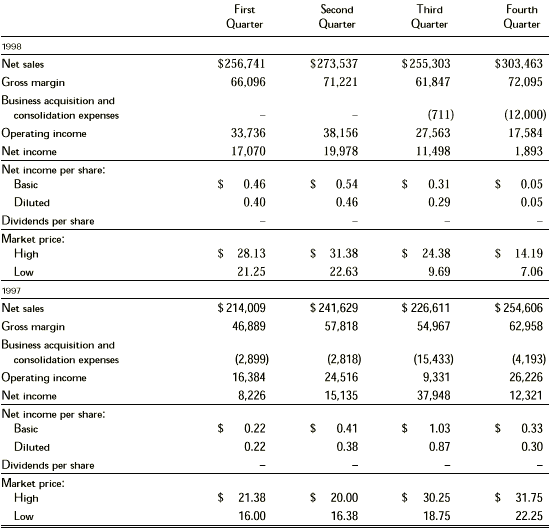|
Notes
to the consolidated financial statements
(continued) |
N o t e 1 6 - S e g m e n t I n f o r m a t i o n
The financial results for Hexcel’s operating segments have been prepared using a management approach, which is consistent with the basis and manner in which Hexcel management internally segregates financial information for the purposes of assisting in making internal operating decisions. Hexcel’s operating segments and related products, are as follows:
REINFORCEMENT PRODUCTS: This segment manufactures and sells carbon fibers and carbon, glass and aramid fiber fabrics. These reinforcement products comprise the foundation of most composite materials, parts and structures. The segment weaves electronic fiberglass fabrics that are a substrate for PCBs. All of the company’s electronic sales come from reinforcement fabric sales. This segment also sells products for general industrial and recreation applications such as decorative blinds and soft body armor. In addition, this segment sells to the company’s Composite Materials segment and other third party customers in the commercial aerospace and space and defense markets. Sales from the Acquired Clark-Schwebel Business are included in this segment.
COMPOSITE MATERIALS: This segment manufactures and sells composite materials, including prepregs, honeycomb, structural adhesives, sandwich panels and specially machined honeycomb parts, primarily to the commercial aerospace and space and defense markets, as well as to the general industrial and recreational markets. This segment also sells to the company’s Engineered Products segment.
ENGINEERED PRODUCTS: This segment manufactures and sells a range of lightweight, high strength composite structures and interiors, primarily to the commercial aerospace and space and defense markets.
Hexcel evaluates performance based on adjusted income before business acquisition and consolidation (“BA&C”) expenses, interest and taxes (“Adjusted EBIT”), and generally accounts for intersegment sales based on arm’s length prices. Corporate and other expenses are not allocated to the operating segments. The following table presents financial information on the company’s operating segments as of December 31, 1998, 1997 and 1996, and for the years then ended:

Reconciliation
of Reportable Segments to Consolidated Totals
Reconciliations of the totals reported for the operating segments to the
applicable line items in the consolidated financial statements are as
follows:

Geographic
Data
Sales and long-lived assets, by geographic area, consisted of the following
for the three years ended December 31, 1998, 1997 and 1996:

Net sales are attributed to geographic areas based on the location in which the sale originated. U.S. net sales include US exports to non-affiliates of $99,976, $70,875 and $53,333, for the years ended December 31, 1998, 1997 and 1996, respectively. Long-lived assets primarily consist of property, plant and equipment, intangibles, investments in affiliated companies and other assets, less long-term deferred tax assets.
Significant Customers
To the extent that the end application of net sales can be identified,
the Boeing Company and their subcontractors accounted for approximately
35%, 36% and 22% of 1998, 1997 and 1996 net sales, respectively. Similarly,
the Airbus Industrie consortium and their subcontractors accounted for
approximately 11%, 10%, and 10%, of 1998, 1997 and 1996 net sales, respectively.
N o t e 17 - Q u a r t e r l y F i n a n c i a l D a t a ( U n a u d i t e d )
Quarterly financial data for the years ended December 31, 1998 and 1997, were:

Results for the quarters ended September 30, 1998 and December 31, 1998, include the results of the Acquired Clark-Schwebel Business, which was acquired on September 15, 1998. The Acquired Clark-Schwebel Business had net sales and operating income of $7,000 and $400, and $51,400 and $7,200, for the quarters ended September 30, 1998 and December 31, 1998, respectively. For the nine months ended September 30, 1997, except for the $39,000 reversal of the US tax valuation allowance reserve on September 30, 1997, there was no net federal tax provision recorded on the company’s US income.